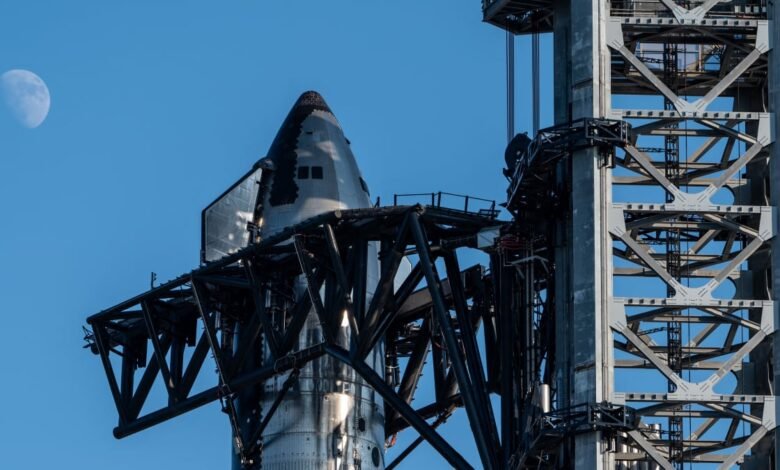SpaceX’s successful Starship flight grabbed by giant mech arms

The Super Heavy booster was calmly grasped from the air.

Starship’s fifth test launch was a ringing success for SpaceX and it’s booster-catching mechanical arms.
Credit: SERGIO FLORES / Contributor / AFP via Getty Images
SpaceX‘s fifth Starship test launch — the reusable transportation key to Elon Musk’s space goals — has made a successful journey up to orbit and back. Most impressive: It was the first use of the company’s futuristic “mechazilla” tech to get its massive vehicle back on the landing pad.
The rocket system took off from the private South Texas launchpad around 8:25 a.m. ET and its booster, known as Super Heavy, was falling gracefully back to Earth only a few minutes later. As SpaceX’s metal arms encircled the 33-engine booster, Kate Tice, quality systems engineering senior manager and broadcast host, exclaimed: “This is absolutely insane!”
The structure, referred to as “chopsticks” by the space company, acts like a giant pincer to safely catch the booster in its return, rather than previously-tested water landings.
“By continuing to push our hardware in a flight environment, and doing so as safely and frequently as possible,” SpaceX wrote on X, “we’ll rapidly bring Starship online and revolutionize humanity’s ability to access space.”
Mashable Light Speed
The return also featured deafening sonic booms, hot pink plasma, and live views of space via Starlink internet satellites.
By 9:30 a.m. ET, the Starship practiced its “bellyflop” landing maneuver, which involves a horizontal free fall and a quick vertical reorientation to control its descent. A few minutes later it was back earth-side, making a dramatic planned splashdown in the Indian Ocean — the company is not likely to recover the ship from the water.
SpaceX’s success today comes amid a history of failed attempts and larger criticism of its “move fast, break things” ethos. Following a less showy third flight that saw the ship destroyed in its journey back to Earth, June’s fourth Starship test launch experimented with a more controlled, soft booster landing in the water and more practice of the “bellyflopping” descent, which Musk likens to “skydiving.”
NASA plans to utilize the Starship rocket system to ferry astronauts on its Artemis III and IV missions, under a $4.2 billion contract with the Musk company.

Chase joined Mashable’s Social Good team in 2020, covering online stories about digital activism, climate justice, accessibility, and media representation. Her work also touches on how these conversations manifest in politics, popular culture, and fandom. Sometimes she’s very funny.
This newsletter may contain advertising, deals, or affiliate links. Subscribing to a newsletter indicates your consent to our Terms of Use and Privacy Policy. You may unsubscribe from the newsletters at any time.




